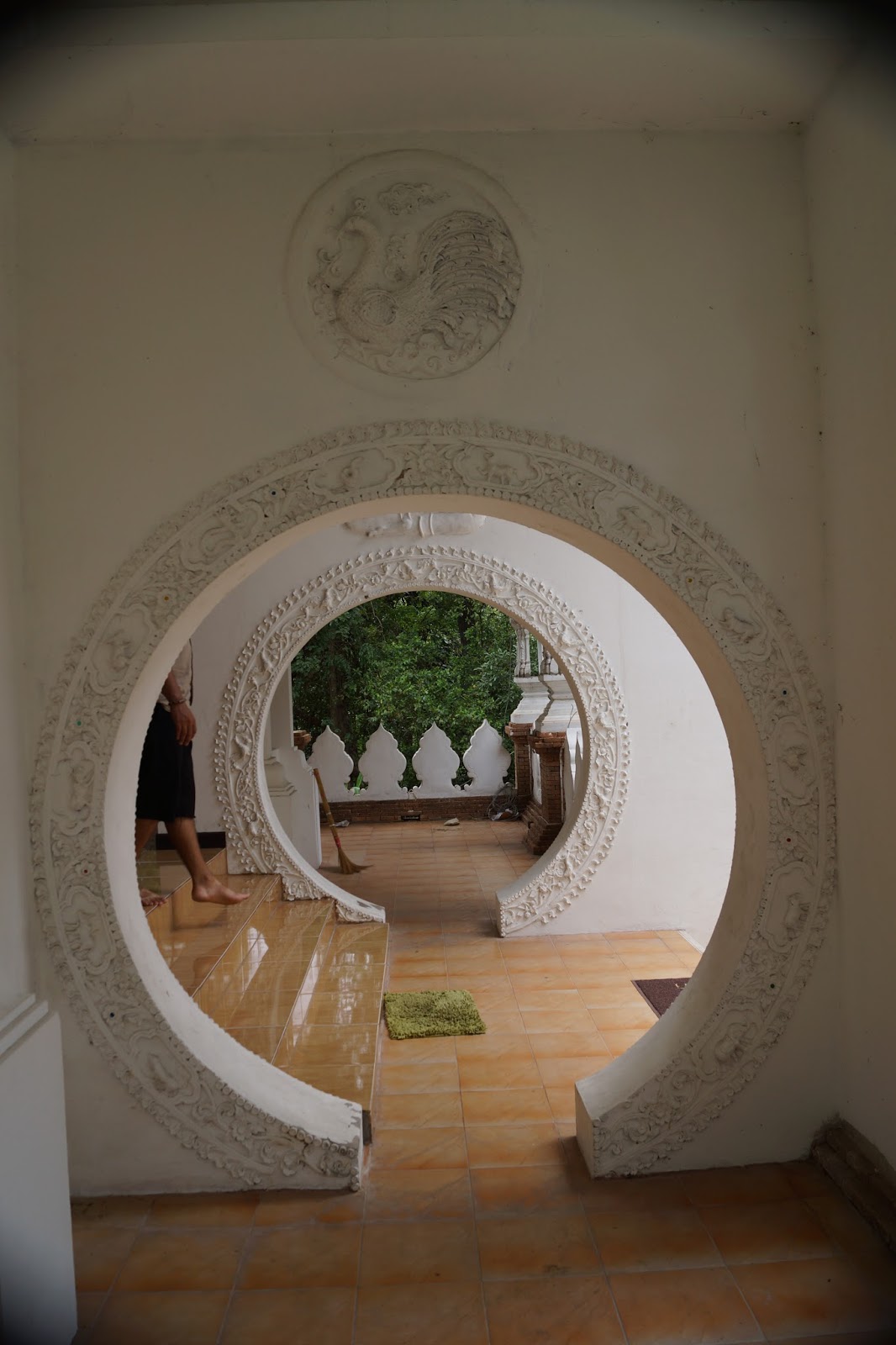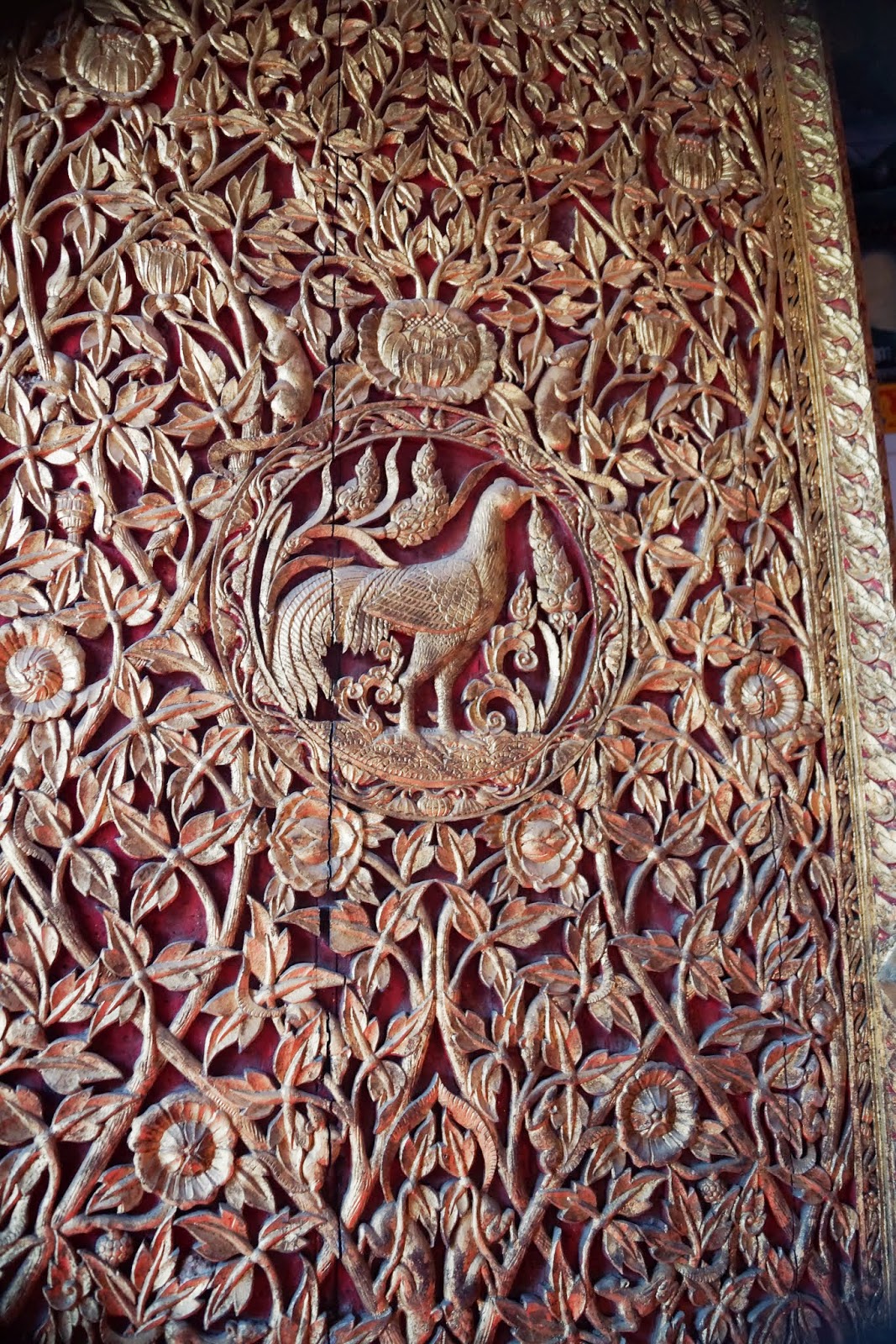We have spent nearly two weeks in the pleasant northern city of Chiang Mai, Thailand. That may seem like an inordinate amount of time to devote to a town of less than 200,000 inhabitants. Yet it has flown by! Between our multiple visits to the Chinese embassy to obtain our tourist visas for our upcoming stop in Beijing, replacing some of our backpacking clothes and camera supplies, and getting the last of our vaccinations in preparation for upcoming jungle outings, we mainly buzzed around on our rental motorbike, exploring countryside temples. The Buddhist structures are totally new to us and astounding in their intricacy and diversity of design. Here is a sampling in the Chiang Mai area:
We have seen lotus flowers all over the place in Thailand, incorporated into art, architecture, landscaping and decoration. I understand that in Buddhism, it symbolizes detachment from the material world, among other interpretations.
Following directions from the owner of our hotel, we found this stupendously impressive temple made entirely of silver. Chiang Mai, Thailand.
Being of the female gender, I was not allowed inside the temple due to an ancient burial of some valuables underground. I don't really understand the connection between these two facts, but at least Harold got some awesome pics of the interior.
Wow!
Wowsa!
Ganesh is the "remover of obstacles" in Hinduism, and apparently has gained widespread popularity in Buddhist Thailand for reasons difficult to ascertain.
One of the temples in the silver temple complex in Chiang Mai.
I don't know why this figure is green, but it is intriguing-looking.
This man diligently engraves the silver sheet, using a slab of tar underneath to absorb the indentations. Chiang Mai, Thailand.
This is a small hilltop temple on the way to Doi Suthep temple complex, in the middle of the national park by the same name. Near Chiang Mai.
At the mountaintop Doi Suthep temple complex.
Teak woodwork at the complex.
This pagoda is believed to contain relics of the Buddha. According to legend, a white elephant wandered to the temple's location, trumpeted three times, and died, leading to the selection of the site in the 14th century.
Some different positions of Buddha, the meaning of which I am not certain.
Temple complex in Lamphun, Thailand.
The wheel is omnipresent in the temples, with the hub, spokes and rim representing the teachings of Buddha in terms of meditation, mindfulness and the "eightfold path" governing behavior.
This Lamphun temple dates to the 7th century A.D.
The monks' chanting competed with the music from a Zumba class across the street.
Here we are after a long day of "templing", with me looking a bit maniacal as we snap a shot of a lit-up countryside temple before heading back to Chiang Mai.


































No comments:
Post a Comment